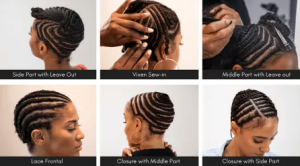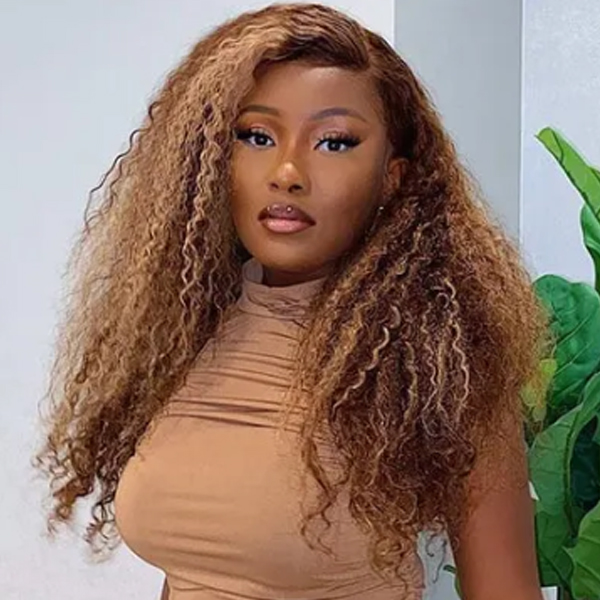what-is-the-best-braid-pattern-for-sew-in-weaves?
A long-lasting, natural-looking sew-in starts with a good braid pattern that is the literal foundation of your sew in weave hairstyle, and can lay the base for a secure, flat, and realistic-looking style. But do you what the best braid pattern for sew in weaves is? Read on for more info on why your braid pattern matters, how to prepare natural hair before braiding, and some sew-in braid patterns you can try next.
Why Is Your Braid Pattern Important For Sew-In Hair Extension?
Is your braid patterns for hair extensions really that important? Yes, there are a few reasons why you should take the time to choose the most suitable braid pattern for your sew-in.
1. It will affect your hairstyle.
The most obvious reason to take extra time to figure out the best braid pattern for you is that it will determine how much versatility you have with your hair. Even your hairstyle will vary on what braid pattern for sew-in was used.
If you want something simple, like gorgeous deep wave hair with a middle part, you won’t need any super complex braid patterns.

But if you want to be able to do ponytails, buns, or half up half down hairstyles, you will probably want to consider more complicated and versatile braiding patterns.
2. It will affect your look.
Another thing to consider when deciding what braid technique to use is how it affects the way the hair extensions sit on your head.
For DIY-ing and inexperienced hairstylists, a poorly made braid pattern will influence how natural your human hair weaves look.
For example, it may look unnatural-looking, and even lead to your braid pattern that suddenly loosens with partying or at work.
3. It will affect the health of your natural hair under the human hair wigs or human hair weaves.
When done properly, a well-done braid pattern actually protects your natural hair from damage due to pressure and tension.
Besides, it also can protect your hair from external environmental stressors, chemicals, and heat styling tools.
What To Do Before You Braid
Before you braid your hair, follow these simple cleaning steps to prolong the lifespan of your hair extensions.
1. Thoroughly wash your hair. It is important to ensure that your braids don’t start to itch or smell when they’re covered by hair extensions for longer periods of time.
2. Deep condition your hair. Make sure to follow up with a deep moisture treatment to lock in that hydration before your hair is braided.
3. Thoroughly dry your hair. It is also crucial for you to thoroughly dry it before you braid, as wet braids can cause your hair to stink. For example, we suggest blow-drying your hair or letting it dry overnight so you don’t risk trapping in any tiny droplets.
4. Trim the ends of your hair by yourselves or your hairstylist before the braiding begins, which will help ensure that they grow properly and stay healthy even though you have your sew-in installed. It will also prevent the ends from tangling while you or your stylist is trying to braid them.
What Is The Best Braid Pattern For Sew In Weaves?
1. Straight Back Cornrows
It is one of the most popular braid patterns for sew-in because it allows for a classy, sleek hairstyle, and is ideal for long hair length. And this braid pattern is simple than the rest, even a beginner can do it. In this case, you can DIY your sew-in and save tons of dimes for your desired hairstyles.
But it can be a bit of a challenge for women who have short hair, as it makes blending more difficult.
Also, keep in mind that you might need to sew down the ends of your cornrows to keep your hair from unraveling.
2. Beehive
If you’re going for a full sew-in, a beehive braid pattern is probably preferred so that your hairstylist doesn’t have to sew down the ends of your hair. As one of the most common and classic braid patterns, the beehive is suitable for those who want a long-lasting, protective style.
It often begins with the outside of your hair and ends in the middle. Thus, it is perfect for all kinds of sew-ins, even short bob wigs, and extensions.
The one downside of this method is that the sew-in options are limited. For example, you won’t be able to part your hair or have any leave-out.
And this braid pattern won’t be the best for straight hair since there is no actual part. Still, this pattern is excellent for curly hair, only if you plan on having bangs.
3. Vixen
As a variation on the beehive, the vixen sew-in pattern has recently exploded in popularity since it allows you to part your hair in more ways.
Instead of braiding your hair into one big circular pattern, the vixen requires you to braid it into two to four mini beehives in different sections on your head and then leave out a portion of your hair. Typically, with the vixen, you leave out more hair at the crown of your head for fuller coverage. As a result, you’ll be able to part in multiple different locations.
Although this style provides you with the most versatility, it is not as protective due to your natural hair being left out. Keep in mind that the more hair you leave out when making a vixen pattern, the more maintenance you’ll need to take care of your hair.
There are many different variations on the classic vixen. You can even have three- and two-part vixen braids if you don’t need as much versatility.
4. Diagonal Braiding Pattern
Similar to the classic straight-back cornrow pattern, the diagonal braiding pattern extends across the top of the head but angles to the side. Because of the slight angle, diagonal braids are perfect for hairstyles involving swooped bangs or angled parts.
Like the straight-back cornrow pattern, you can either leave some hair out or braid it all in for a more protective style.
This technique, much like the other styles I mentioned, is also excellent for ponytails, and high buns.
5. U-Part with Leave Out
If you’re looking for the best braiding pattern for a U part wig, it is a perfect option for you. After all, this braiding pattern allows you to leave out 1.5 to 2 inches of hair on either side of your middle part. Naturally, it will give you a more natural-looking appearance.
Plus, a U-part pattern is similar to the traditional cornrow pattern except that multiple parts of the braid cross over into one another.
But it isn’t an ideal choice for those people who want a protective style for natural hair because a large chunk of hair is left out.
6. Zig-zag Braiding Pattern
The zig-zag pattern braiding can be a bit difficult to achieve, but it’s still one of the most utilized braiding patterns.
In this method, your hair will be cornrowed into rows that go back and forth across your scalp in a horizontal orientation. This method is perfect for any style with multiple layers, especially when sectioned correctly. More importantly, you can also switch up your part by tweaking the location of the zig-zags.
But there is no doubt that it’s also very tight because of the versatility of the design.
Therefore, the big con of this style is that it’s difficult to take out during the take-down process. If you find a professional hairstylist, you can have a bold try.
At the end of the day, the result of your sew-in completely depends on the braid pattern. With that being said, it’s also extremely important for you to select hair extensions and lace front wigs that are made with high-quality, 100% virgin human hair.
If you want a natural, dense, soft, lustrous look, welcome to visit our website to shop for your favorite hair products.



